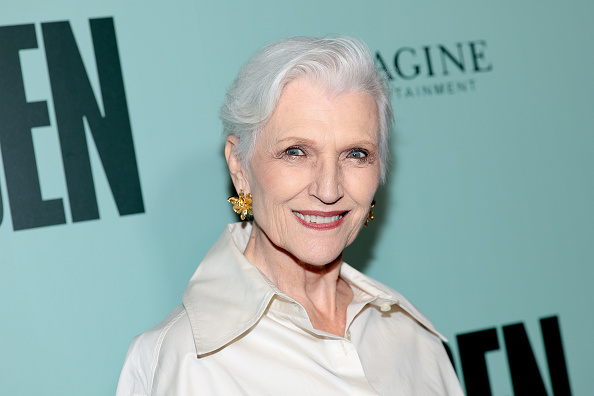Picasso and Chanel are two of the most important names in the 20th century art world. They met in the spring of 1917 on the occasion of the ballet’s premiere For the, most likely through Misia Godebska and Jean Cocteau, with whom Chanel formed a lasting friendship. They introduced her to Parisian artistic circles, where the Spanish painter was already a reference figure. At that time, the seamstress began to deal with the Picasso couple, which coincided with the artist’s active participation in the ballets of Sergei Diaghilev. Professionally, they collaborated twice, both with Jean Cocteau: on Antigone (1922) and in Sergei Diaghilev’s Russian ballet Le Train Blue (1924).
Arriving on the 30th anniversary of the Thyssen-Bornemisza National Museum, the exhibition delves into the creators’ relationship in four sections, presented in chronological order and covering the years between approximately 1908 and 1925, the works are divided into: Cubism and Style chanell; Olga Picasso; Antigone and the Blue Train, where stimulating dialogues take place between Picasso’s avant-garde works and Chanel’s innovative designs. The exhibition is organized with the support of the National Commission for the Commemoration of the 50th Anniversary of the Death of the Spanish Artist Pablo Picasso and the support of the Musée national Picasso-Paris, in addition to the Chanel firm, the Telefónica firm and the Community of Madrid .
Picasso’s grandson, Bernard Ruiz Picasso, attended the exhibition’s press conference and went to the lectern to offer a word of thanks to the museum. The exhibition has managed to bring together numerous dresses, oil paintings, drawings and other pieces of great value on loan from European and American museums and collections. According to the museum authorities, it took four years to collect all the pieces, as some are priceless, such as the ceramic vessel from 390 BC. Antigone before Creon, which is preserved in very good condition and on loan from the British Museum.
French novelist, playwright, poet, essayist and film maker, Jean Cocteau was one of the links between Picasso and Chanel, who met in the spring of 1917, when both were in their thirties and already famous in their respective professional activities. Picasso became one of the most sought after painters in Paris, while Chanel, after starting her career as a milliner, managed to open shops as a fashion designer in Paris (1910), Deauville (1912) and Biarritz (1915). The seamstress surrounded herself with virtuous artists from her Parisian environment, including Picasso. Another of his links was Picasso’s first wife, Olga Stepanovna Jokhlova, who, according to the composer Stravinsky, owned many of his dresses. With these dresses, she can be seen in personal photos and home videos of the family, some of which are featured in the exhibit. Olga was portrayed in numerous paintings by Picasso where you can see the influence of Chanel clothing in his work, to such an extent that it is thought that Olga Stepanovna’s wedding dress could be a Chanel design.
The artists even share a formal kinship, both were avant-garde and creators of new concepts of fashion and painting. According to the exhibition’s official statement, “Chanel created the ‘uniform’ of the modern and dynamic woman of the 20th century, imposing the appeal of repetition, just as Picasso managed to formulate a new canon of plastic beauty that became his style. Chanel understood that the painter had found the keys to a new classicism, a language that, while synonymous with modernity, would not go out of fashion.”
Chanel’s admiration for Picasso is confirmed by her own statements: “(Picasso) destroyed and then built. He arrived in Paris in 1900, when I was a girl, and he already knew how to draw as an entrance, whatever Sert says. I “I am almost old and Picasso is still working; he has become the radioactive principle of painting. Our meeting could only have taken place in Paris.” Gabrielle Chanel (L’Allure de Chanel, Paul Morand).
The tour they have prepared in the Thyssen museum starts from the beginning of the 20th century, the first paintings and garments they show have a deep Cubist influence. Painting studies all possible positions with the object and fashion ceases to be static and pays attention to the movement of the body. In reference to this stage, in the exhibition you can see the painting Woman’s head by Picasso and a black satin crepe dress with symmetrical shapes and a pleated skirt that would give the garment movement. As they say in the statement “(Chanel) is committed to knitwear and cotton, fabrics considered humble, it also aligns with the cubist poetics of using bad materials, of the everyday object that has direct contact with reality. makes possible.”
The second phase of the exhibition shows the influence of Olga Picasso, who, as we mentioned, was usually dressed in garments by the French designer. At the time, wearing Chanel was synonymous with freedom and comfort. In the museum, they have selected a number of Chanel designs from the era that resemble those of the painter’s wife.
The third volume contains garments and paintings related to the scaled-down version of Sophocles’ tragedy Antigone, which Jean Cocteau wrote and which would become the first professional project in which Picasso and Chanel collaborated. It premiered in the theater in December 1922 L’Atelier from Montmartre. In this one, Picasso was in charge of the set: an ultramarine sky and Doric columns painted on a canvas, and Chanel designed the costumes inspired by archaic Greece.
Finally, the fourth part of the exhibition focuses on: the blue train, the second and final professional collaboration of Picasso and Chanel, which took place in 1924, in a danced operetta produced by Diaghilev, again with a libretto by Jean Cocteau. Chanel returned to take care of Picasso’s costumes and painting Two women running on the beach It was used as a backdrop for the play.
Source: Marie Claire





